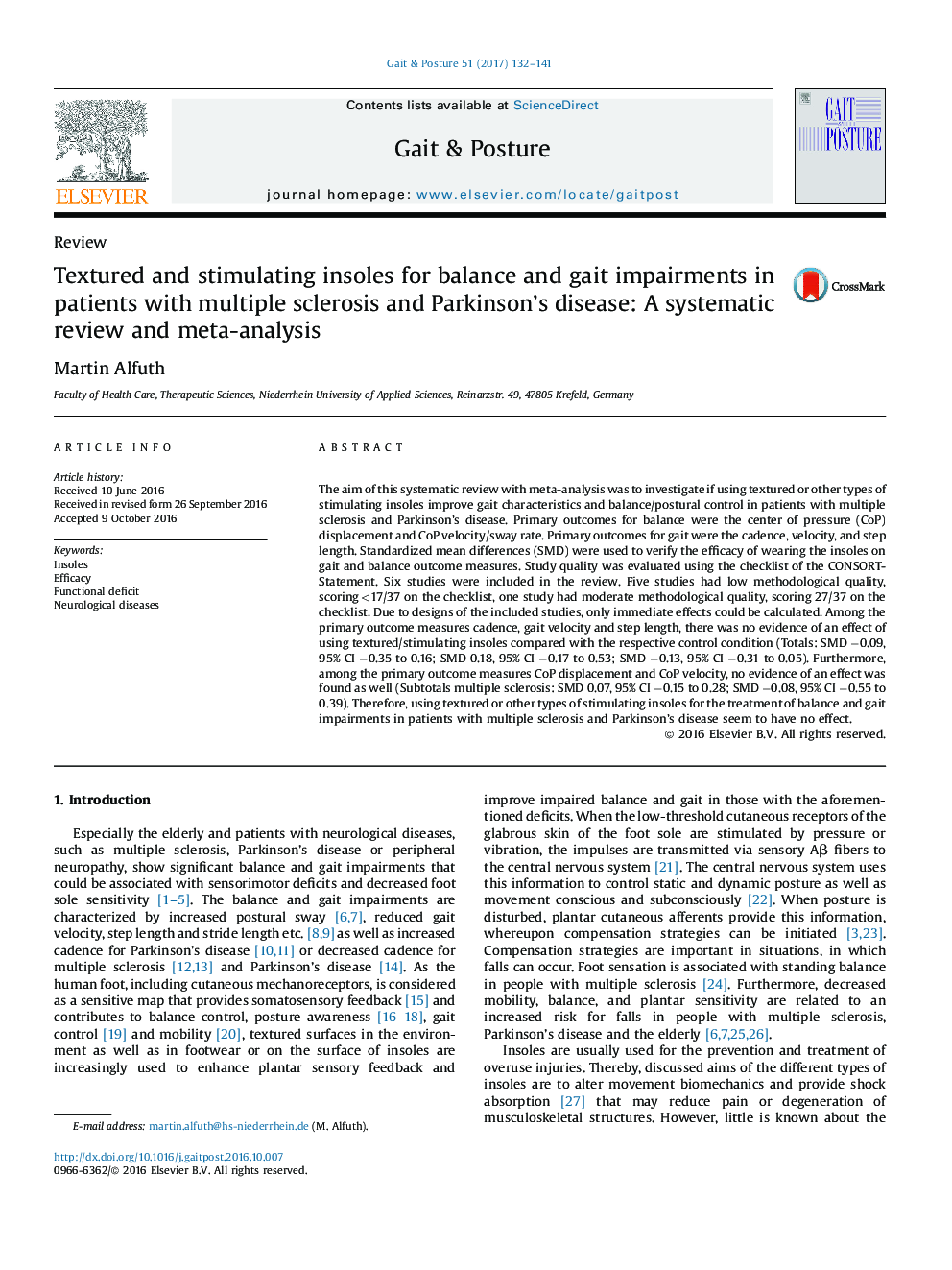| Article ID | Journal | Published Year | Pages | File Type |
|---|---|---|---|---|
| 8798699 | Gait & Posture | 2017 | 10 Pages |
Abstract
The aim of this systematic review with meta-analysis was to investigate if using textured or other types of stimulating insoles improve gait characteristics and balance/postural control in patients with multiple sclerosis and Parkinson's disease. Primary outcomes for balance were the center of pressure (CoP) displacement and CoP velocity/sway rate. Primary outcomes for gait were the cadence, velocity, and step length. Standardized mean differences (SMD) were used to verify the efficacy of wearing the insoles on gait and balance outcome measures. Study quality was evaluated using the checklist of the CONSORT- Statement. Six studies were included in the review. Five studies had low methodological quality, scoringâ<17/37 on the checklist, one study had moderate methodological quality, scoring 27/37 on the checklist. Due to designs of the included studies, only immediate effects could be calculated. Among the primary outcome measures cadence, gait velocity and step length, there was no evidence of an effect of using textured/stimulating insoles compared with the respective control condition (Totals: SMD â0.09, 95% CI â0.35 to 0.16; SMD 0.18, 95% CI â0.17 to 0.53; SMD â0.13, 95% CI â0.31 to 0.05). Furthermore, among the primary outcome measures CoP displacement and CoP velocity, no evidence of an effect was found as well (Subtotals multiple sclerosis: SMD 0.07, 95% CI â0.15 to 0.28; SMD â0.08, 95% CI â0.55 to 0.39). Therefore, using textured or other types of stimulating insoles for the treatment of balance and gait impairments in patients with multiple sclerosis and Parkinson's disease seem to have no effect.
Related Topics
Health Sciences
Medicine and Dentistry
Orthopedics, Sports Medicine and Rehabilitation
Authors
Martin Alfuth,
